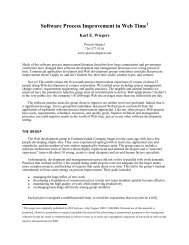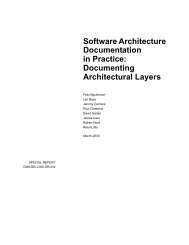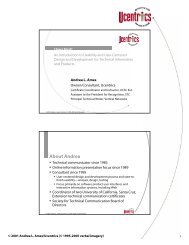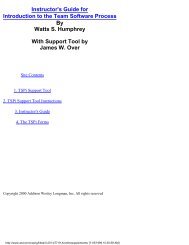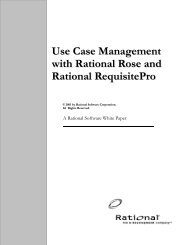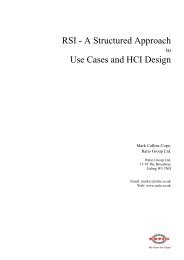Using Data Modeler
Using Data Modeler
Using Data Modeler
Create successful ePaper yourself
Turn your PDF publications into a flip-book with our unique Google optimized e-Paper software.
Mapping Packages to SchemasIn a class diagram, a logical package is an optional element, but when using <strong>Data</strong><strong>Modeler</strong>, a logical package is required. A logical package is considered to be theprimary container of your object model, so it is the level at which <strong>Data</strong> <strong>Modeler</strong>initiates the transformation process. You must group your classes in a logical packageto transform them to a data model. <strong>Data</strong> <strong>Modeler</strong> allows you to transform one logicalpackage at a time and generates one schema for each logical package transformed.Mapping Classes to TablesClasses are high-level entities that can have two states of existence—transient andpersistent. It is the persistent classes that map to physical tables, because persistentclasses can work as persistent data storage, existing even after the application hascompleted its process. All persistent classes can map to tables using a one-to-onemapping, unless you are using an inheritance structure in your model, then themapping could be a one-to-many mapping.Figure 3Classes Map to TablesMapping Attributes to ColumnsPersistent attributes map to columns in a one-to-one mapping. In your model, youmay have multiple attributes that map to one column, but in the transformation, <strong>Data</strong><strong>Modeler</strong> transforms one-to-one for every attribute. <strong>Data</strong> <strong>Modeler</strong> ignoresnon-persistent attributes like derived values.14 Chapter 3 - Logical <strong>Data</strong> Modeling



